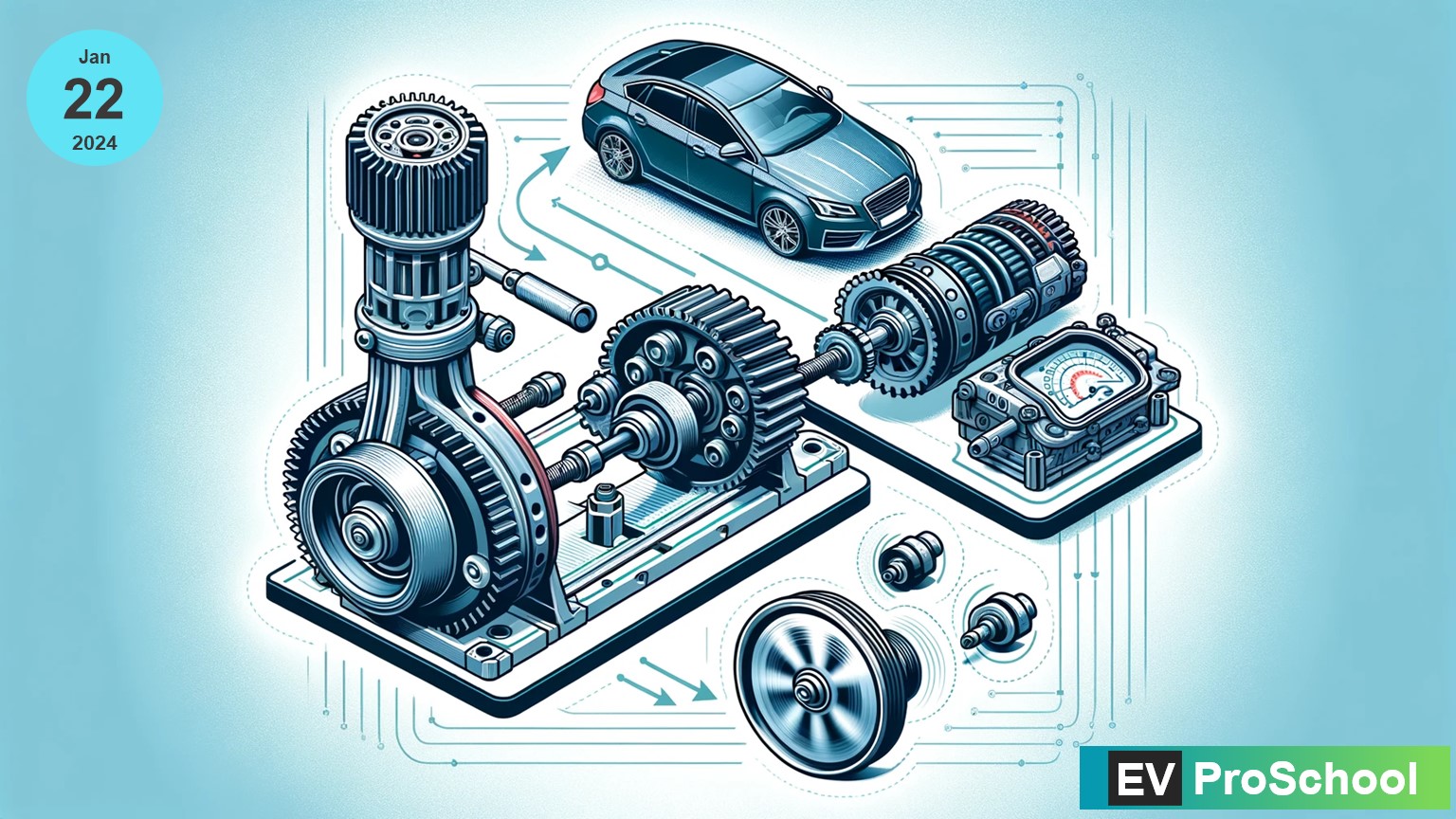When it comes to understanding how vehicles operate and how power is transferred from the motor to the wheels, torque transmission plays a crucial role. In this beginner-friendly guide, we’ll explore the process of torque transmission step by step, with examples to make it easy to comprehend.
Step 1: Motor to Gearbox
An electric motor is at the heart of the vehicle’s power system. It generates torque, which is a twisting force that makes the motor shaft rotate. For instance, imagine a motor with a torque output of 100 Nm. However, this torque alone is not enough to drive the vehicle forward effectively. That’s where the gearbox comes into play.
The gearbox is a mechanical device that contains gears of different sizes, each with a specific gear ratio. The gear ratio determines how the torque from the motor will be transformed before reaching the output shaft of the gearbox.
Example: Let’s say our gearbox has a gear ratio of 4:1. This means that for every one revolution of the motor’s input shaft, the output shaft of the gearbox completes four revolutions.
Result: The torque transmitted to the output shaft of the gearbox will be amplified by the gear ratio.
Step 2: Gearbox to Wheel
With the torque now amplified by the gearbox, it’s time to transfer it to the wheels. The wheel radius is a crucial factor in calculating the torque at the wheels.
Example: Assuming the wheel radius is 0.3 meters, the torque at the wheels will be the same as the amplified output torque from the gearbox.
Result: The torque at the wheels will be equal to the amplified output torque from the gearbox.
Step 3: Wheel to Vehicle Speedometer
As the wheels rotate, they move the vehicle forward. The vehicle’s speedometer measures the wheel speed, which is directly related to the vehicle’s speed.
Example: Let’s say the wheel speed is 50 revolutions per minute (RPM). To find the vehicle speed, we need to consider the wheel’s circumference.
Result: By calculating the wheel’s circumference and using the wheel speed, we can determine the vehicle’s speed.
In Summary:
The electric motor generates torque, which is then amplified by the gearbox. This amplified torque is transferred to the wheels, causing the vehicle to move forward. The speedometer measures the wheel speed and displays the vehicle’s speed on the dashboard.
Types of Gearboxes
Gearboxes can be classified into two main types based on their gear ratio and their effect on torque and speed:
- Torque Multiplier Gearbox:
This type of gearbox is designed to amplify the torque output while reducing the rotational speed of the output shaft compared to the input shaft. It is commonly used in vehicles and machinery that require higher torque at the wheels or output shaft, such as trucks and heavy machinery.
- Speed Multiplier Gearbox:
Conversely, a speed multiplier gearbox is designed to increase the rotational speed of the output shaft while reducing the output torque compared to the input shaft. It finds application in cases where high-speed rotation is required, such as in some industrial machines and certain high-performance vehicles.
In conclusion, understanding torque transmission is fundamental to grasping how vehicles work and how power is effectively transmitted from the motor to the wheels. By appreciating the role of the gearbox and the types of gear ratios, even beginners can gain insight into the fascinating mechanics that drive our vehicles forward.



